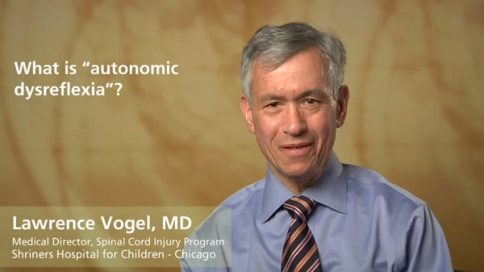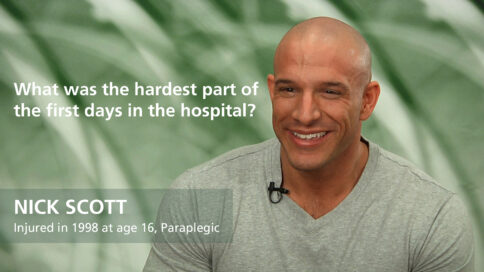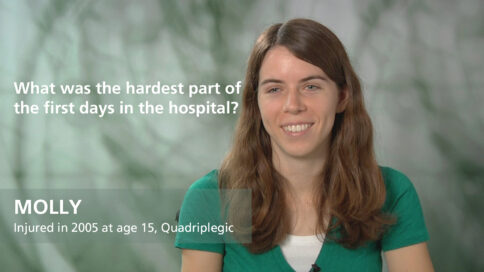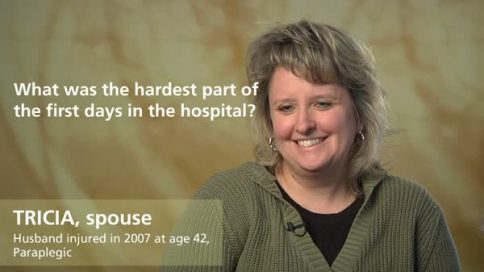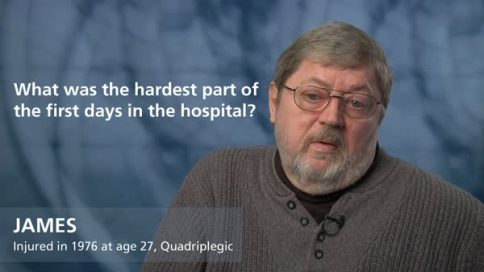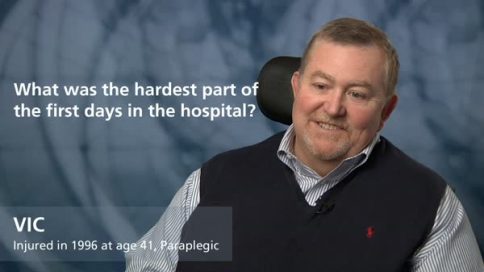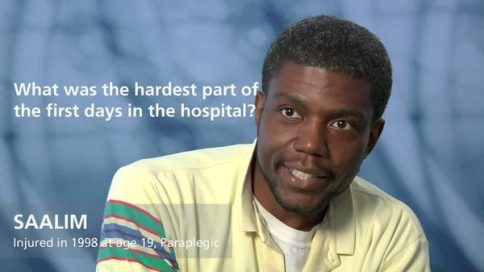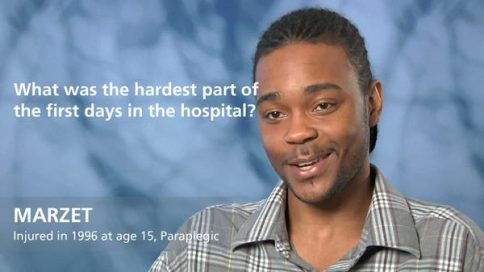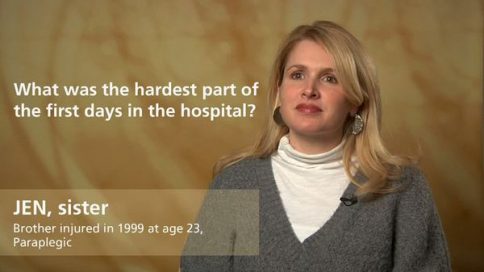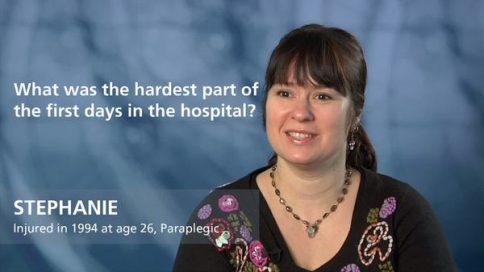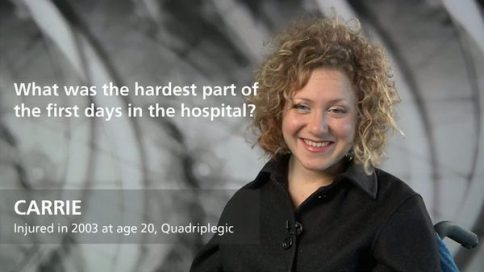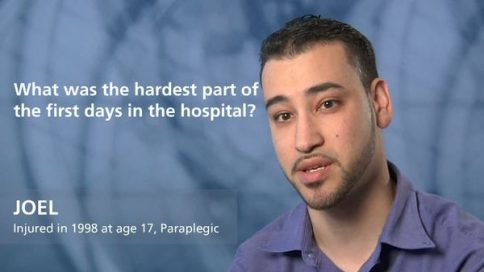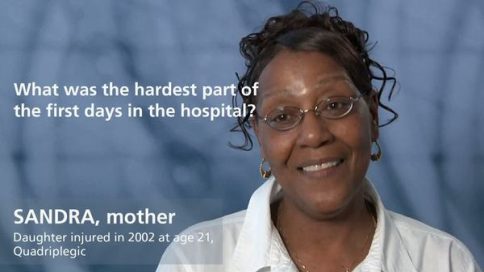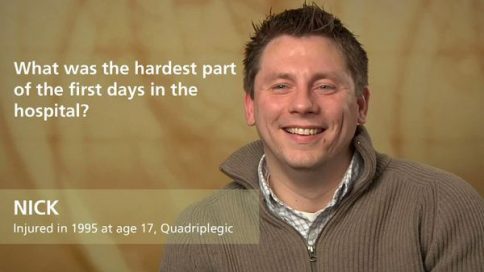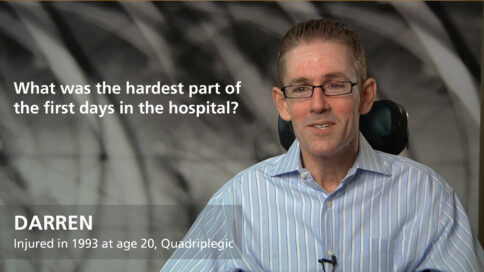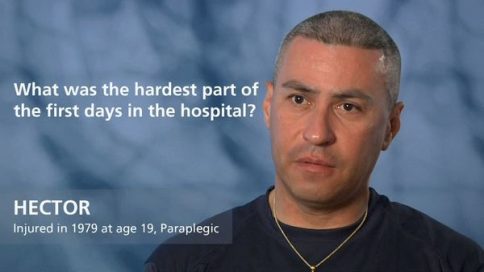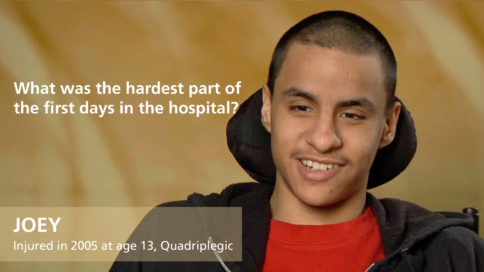Is it common to experience neuropathic pain after a spinal cord injury? - David Chen, MD
|
|
Is it common to experience neuropathic pain after a spinal cord injury? |
|
David Chen, MDMedical Director, Spinal Cord Injury Rehabilitation Program, Rehabilitation Institute of Chicago |
||
| Read Bio | More Videos by David Chen | |
|
Share |
||
Transcript
There’s a common type of pain that we call dysesthetic sensation, or you may hear a term neuropathic pain or nerve pain, which, people have compared to, like, phantom sensations in people who have lost their limbs because of amputations. While the reasons for them may be different, the underlying mechanisms for it may in fact have some similarities. There is some belief that the reason for those unusual sensations may be because of signals that are generated up in the brain. Now normally there are unconscious signals, sort of what we can call feedback signals, that go back and forth between different parts of our body and the brain. And there is a belief, a theory, that after a spinal cord injury, because those signals from that part of the body back to the brain are now blocked, and after a period of time the brain starts to create signals of its own to make up for the lack of signals that are coming from the body. The reason with think that may be taking place is that many of the medications that are used to help manage this neuropathic pain we know work essentially up in the brain, not out in the periphery or out in the area of the body where the person can’t normally feel. So because of that, there’s a belief that these signals are generated in the brain, and why these medications are effective in helping minimize these painful sensations.
Show Less|
|
||
add
Is it common to experience neuropathic pain after a spinal cord injury? |
||
David Chen, MDMedical Director, Spinal Cord Injury Rehabilitation Program, Rehabilitation Institute of Chicago |
More Videos by David Chen | |
| Transcriptadd | share | |
There’s a common type of pain that we call dysesthetic sensation, or you may hear a term neuropathic pain or nerve pain, which, people have compared to, like, phantom sensations in people who have lost their limbs because of amputations. While the reasons for them may be different, the underlying mechanisms for it may in fact have some similarities. There is some belief that the reason for those unusual sensations may be because of signals that are generated up in the brain. Now normally there are unconscious signals, sort of what we can call feedback signals, that go back and forth between different parts of our body and the brain. And there is a belief, a theory, that after a spinal cord injury, because those signals from that part of the body back to the brain are now blocked, and after a period of time the brain starts to create signals of its own to make up for the lack of signals that are coming from the body. The reason with think that may be taking place is that many of the medications that are used to help manage this neuropathic pain we know work essentially up in the brain, not out in the periphery or out in the area of the body where the person can’t normally feel. So because of that, there’s a belief that these signals are generated in the brain, and why these medications are effective in helping minimize these painful sensations.
